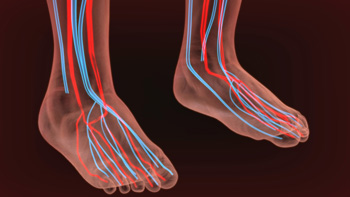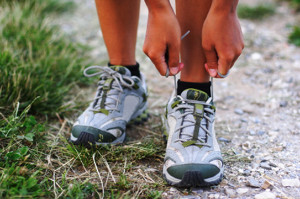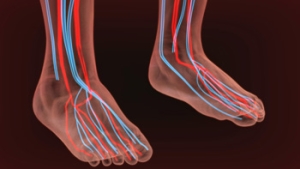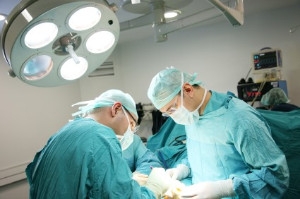Connect With Us
Blog

Causes of Poor Circulation
 Research has shown there may be several indicators of poor circulation. These may include discoloration of the toes, a loss of feeling or numbing sensation, dry skin, or frequent headaches. This condition may typically happen as a result of damage the blood vessels have incurred, and there are several ways for this to occur. Genetics may play a significant role, in addition to having excess fat, lack of following an effective exercise routine, and developing diabetes, which is the result of elevated glucose levels. Poor circulation may be indicative of raynaud’s disease, which typically causes the fingers and toes to lose feeling and become cold. If you are experiencing any symptoms of poor circulation, it is suggested to speak to a podiatrist who can properly diagnosis this condition and begin the correct treatment.
Research has shown there may be several indicators of poor circulation. These may include discoloration of the toes, a loss of feeling or numbing sensation, dry skin, or frequent headaches. This condition may typically happen as a result of damage the blood vessels have incurred, and there are several ways for this to occur. Genetics may play a significant role, in addition to having excess fat, lack of following an effective exercise routine, and developing diabetes, which is the result of elevated glucose levels. Poor circulation may be indicative of raynaud’s disease, which typically causes the fingers and toes to lose feeling and become cold. If you are experiencing any symptoms of poor circulation, it is suggested to speak to a podiatrist who can properly diagnosis this condition and begin the correct treatment.
While poor circulation itself isn’t a condition; it is a symptom of another underlying health condition you may have. If you have any concerns with poor circulation in your feet contact one of our podiatrists of Family Foot Care of Long Island. Our doctors will treat your foot and ankle needs.
Poor Circulation in the Feet
Peripheral artery disease (PAD) can potentially lead to poor circulation in the lower extremities. PAD is a condition that causes the blood vessels and arteries to narrow. In a linked condition called atherosclerosis, the arteries stiffen up due to a buildup of plaque in the arteries and blood vessels. These two conditions can cause a decrease in the amount of blood that flows to your extremities, therefore resulting in pain.
Symptoms
Some of the most common symptoms of poor circulation are:
- Numbness
- Tingling
- Throbbing or stinging pain in limbs
- Pain
- Muscle Cramps
Treatment for poor circulation often depends on the underlying condition that causes it. Methods for treatment may include insulin for diabetes, special exercise programs, surgery for varicose veins, or compression socks for swollen legs.
As always, see a podiatrist as he or she will assist in finding a regimen that suits you. A podiatrist can also prescribe you any needed medication.
If you have any questions, please feel free to contact our office located in Port Jefferson Station, NY . We offer the newest diagnostic and treatment technologies for all your foot care needs.
Causes Symptoms and Treatment for Poor Circulation in the Feet
The purpose of the body’s circulation system is to transport blood, oxygen, and nutrients throughout the body. A reduction of blood to a specific part of the body may cause one to experience symptoms of poor circulation. The most common causes of poor circulation in the feet are obesity, diabetes, and heart conditions such as peripheral artery disease (PAD). Common symptoms of poor circulation include tingling, numbness, throbbing, pain and muscle cramps.
Peripheral artery disease is a common cause of poor circulation in the legs. Symptoms of PAD are cramping, pain or tiredness in the leg or hip muscles while walking or climbing stairs. This pain tends to go away with rest and starts back up when you begin to walk. It is a condition that causes the blood vessels and arteries to become narrow. Although PAD is more common in adults over the age of 50, it may also occur in younger people. A similar condition called atherosclerosis causes arteries to stiffen up due to a buildup of plaque in the arteries and blood vessels.
Blood clots are also a common cause of poor circulation in the feet. Clots may obstruct blood vessels and if they occur in the legs, they may eventually lead to pain and discoloration. This occurrence is commonly known as deep vein thrombosis (DVT) and it may travel to the lungs. Varicose veins are another condition that may lead to poor circulation, and it is caused by incompetence of the valves in the veins. Women who are overweight are prone to developing this condition. Lastly, diabetes, which is correlated with poor blood sugar metabolism may lead to chronic poor circulation. Those with diabetes often suffer from cramping in the legs, calves, thighs and buttocks.
If you are looking for ways to avoid poor circulation there are some tips you can follow. One tip is to avoid sitting for too long. If you plan to sit down for a long period of time, you should try standing up occasionally, to improve your circulation. Another great way to avoid poor circulation is to exercise. Exercise is an excellent way to pump the heart and increase blood flow. Those who suffer from poor circulation should also avoid smoking, reduce their salt intake, and try to lose weight.
If you are experiencing symptoms from poor circulation in your feet, you should consult with your podiatrist to determine the best method for treatment for you. He or she may prescribe medication in addition to recommending specific lifestyle changes to improve your circulation.
Correct Methods of Buying Shoes That Fit Properly
 Research has shown the feet may change sizes as the aging process occurs. Many people may select shoes by the size that is indicated, despite the fact they may not fit properly. It’s important to try both shoes on, which may aid in determining if these are the correct shoes to purchase. Adequate space up to a half inch above the longest toe should be present for maximum comfort while standing up. It’s important to consider the material of the shoe, which may consist of a soft and flexible consistency that ideally should match the shape of the foot. Many people try shoes on that may fit too tightly, and their expectation may be that the shoes will stretch over time. This is considered to an erroneous method of buying shoes and a properly fitted shoe will feel good at the time it is tried on. If you would like additional information on how to buy shoes that fit properly, please consult with a podiatrist who can properly guide you.
Research has shown the feet may change sizes as the aging process occurs. Many people may select shoes by the size that is indicated, despite the fact they may not fit properly. It’s important to try both shoes on, which may aid in determining if these are the correct shoes to purchase. Adequate space up to a half inch above the longest toe should be present for maximum comfort while standing up. It’s important to consider the material of the shoe, which may consist of a soft and flexible consistency that ideally should match the shape of the foot. Many people try shoes on that may fit too tightly, and their expectation may be that the shoes will stretch over time. This is considered to an erroneous method of buying shoes and a properly fitted shoe will feel good at the time it is tried on. If you would like additional information on how to buy shoes that fit properly, please consult with a podiatrist who can properly guide you.
Getting the right shoe size is an important part of proper foot health. Seek the assistance of one of our podiatrists from Family Foot Care of Long Island. Our doctors will provide the care you need to keep you pain-free and on your feet.
Getting the Right Shoe Size
There are many people who wear shoes that are the incorrect size, negatively affecting their feet and posture. Selecting the right shoes is not a difficult process, so long as you keep several things in mind when it comes to choosing the right pair.
- When visiting the shoe store, use the tools available to measure your foot.
- Be sure there is ‘wiggle room’. There should be about an inch between your toes and the tip of your shoes.
- Do not always assume you are the same size, as manufacturers run differently.
- Purchase shoes later in the day, as your feet swell as the day progresses.
- If a shoe is not comfortable, it is not suitable. Most shoes can’t be ‘broken in’, and comfort should be the ultimate goal when it comes to choosing the right pair of shoes
As our feet hold our body weight and keep us moving, it is important to treat them right. Picking the right pair of shoes can provide your feet comfort and mobility without pain.
If you have any questions, please feel free to contact our office located in Port Jefferson Station, NY . We offer the newest diagnostic and treatment technologies for all your foot care needs.
Getting the Right Shoe Size
If you want to ensure the long-term health of your feet, you should choose the right pair of shoes to wear on an everyday basis. Poorly fitting shoes will not only be uncomfortable, but they may also cause foot pain and unwanted foot conditions. When looking for a new pair of shoes, there are certain factors you should look for.
One of the most crucial tips you can follow is to always try shoes on in the afternoon. It is normal for feet to swell throughout the day, which means your shoe size may be different in the morning compared to what it is at night. To be safe, you should go with the slightly bigger size to ensure that your feet have enough room within your shoes.
Another rule is to never buy shoes that are too tight (Many people buy shoes that are too tight for their feet and expect the shoes to stretch out). If you are looking for a pair of running sneakers, you can go to a specialty running shoe store to have your feet properly sized. When you purchase shoes in-store, walk around in them to make sure the shoes you are going to buy fit you properly. Take some time to make sure the shoes are comfortable for your feet
The upper section of your shoe should be made from a softer, more flexible material. The material that makes up the shoe should not be slippery. Arch support should be a key factor in the decision-making process for shoes. Arch support is crucial because it will prevent the arches in your feet from collapsing. If your arches collapse, the plantar fascia may begin to stretch out which could lead to plantar fasciitis.
Many problematic foot conditions may be prevented by wearing properly fitting shoes. Some of these unwanted conditions are bunions, corns, calluses, pain, stress fractures, and plantar fasciitis. If you are suffering from any of these ailments you may want to speak with your podiatrist.
Children and Blisters
 If you notice an area of skin on your child’s foot in the shape of what appears to be a small bubble, you are most likely looking at a blister. They are typically caused by excess friction that is placed on that portion of the skin, and this generally originates from wearing shoes or socks that are too tight. There may be additional reasons why blisters might occur, which may include allergic reactions, extreme burns, or insect bites. The body creates a natural defense mechanism to protect the affected area, and it’s important to tell your child to refrain from touching or popping the blister. If it should burst as a result of pressure that is applied to it, it is beneficial to wash the area with clean water, and this may possibly promote healing. If pain is caused by a blister that forms on your child’s foot, it is suggested that you seek the counsel of a podiatrist who can properly treat this condition.
If you notice an area of skin on your child’s foot in the shape of what appears to be a small bubble, you are most likely looking at a blister. They are typically caused by excess friction that is placed on that portion of the skin, and this generally originates from wearing shoes or socks that are too tight. There may be additional reasons why blisters might occur, which may include allergic reactions, extreme burns, or insect bites. The body creates a natural defense mechanism to protect the affected area, and it’s important to tell your child to refrain from touching or popping the blister. If it should burst as a result of pressure that is applied to it, it is beneficial to wash the area with clean water, and this may possibly promote healing. If pain is caused by a blister that forms on your child’s foot, it is suggested that you seek the counsel of a podiatrist who can properly treat this condition.
Blisters may appear as a single bubble or in a cluster. They can cause a lot of pain and may be filled with pus, blood, or watery serum. If your feet are hurting, contact one of our podiatrists of Family Foot Care of Long Island. Our doctors can provide the care you need to keep you pain-free and on your feet.
Foot Blisters
Foot blisters are often the result of friction. This happens due to the constant rubbing from shoes, which can lead to pain.
What Are Foot Blisters?
A foot blister is a small fluid-filled pocket that forms on the upper-most layer of the skin. Blisters are filled with clear fluid and can lead to blood drainage or pus if the area becomes infected.
Symptoms
(Blister symptoms may vary depending on what is causing them)
- Bubble of skin filled with fluid
- Redness
- Moderate to severe pain
- Itching
Prevention & Treatment
In order to prevent blisters, you should be sure to wear comfortable shoes with socks that cushion your feet and absorb sweat. Breaking a blister open may increase your chances of developing an infection. However, if your blister breaks, you should wash the area with soap and water immediately and then apply a bandage to the affected area. If your blisters cause severe pain it is important that you call your podiatrist right away.
If you have any questions, please feel free to contact our office located in Port Jefferson Station, NY . We offer the newest diagnostic and treatment technologies for all your foot care needs.
Blisters
Blisters are pockets of fluid that occur under the top layer of your skin. These fluid pockets are usually filled with pus, blood, or serum. Blisters may itch or hurt and can appear as a single bubble or in clusters.
The most common types of blisters are friction blisters. This type of blister may be caused by wearing shoes that are too tight. Friction blisters can also occur on the hands. A change in temperature may also cause blisters on the feet. In the freezing air, frostbite on your toes can lead to blisters, as well as sunburn from hot weather.
The best way to treat a blister is to keep it clean and dry. Most blisters will get better on their own. Once the skin absorbs the fluid within the blister, it will flatten and eventually peel off. You should avoid popping your blister unless you podiatrist does it for you. Additional treatment options include applying an ice pack to the blister or using over-the-counter blister bandages to cover the affected area.
If your blister becomes discolored, inflamed, or worsens it is advised that you speak to your podiatrist. Blisters that are yellow, green, or purple may be infected and require immediate medical attention. Blisters that are abnormally colored may be a sign of a more serious underlying health condition such as herpes.
What Is a Blister?
 A blister is defined as a small area that is filled with fluid on the surface of the skin. It is typically the result of increased friction in that portion of the skin, and generally occurs when the foot regularly rubs against tight shoes. When blisters develop on the feet, it may be difficult and painful to walk, and equally hard to treat. There are several causes why this uncomfortable foot condition may develop, including wearing shoes and socks that are too tight, allergic reactions to an insect bite, or the debilitating condition known as frostbite which may damage blood vessels in the skin. Research has shown the average blister will heal on its own within a few days, and it’s important to leave them alone while they are filled with fluid. If you are noticing blisters on your feet often, it is suggested to speak with a podiatrist who can guide you in choosing the correct shoes which may alleviate this condition from occurring.
A blister is defined as a small area that is filled with fluid on the surface of the skin. It is typically the result of increased friction in that portion of the skin, and generally occurs when the foot regularly rubs against tight shoes. When blisters develop on the feet, it may be difficult and painful to walk, and equally hard to treat. There are several causes why this uncomfortable foot condition may develop, including wearing shoes and socks that are too tight, allergic reactions to an insect bite, or the debilitating condition known as frostbite which may damage blood vessels in the skin. Research has shown the average blister will heal on its own within a few days, and it’s important to leave them alone while they are filled with fluid. If you are noticing blisters on your feet often, it is suggested to speak with a podiatrist who can guide you in choosing the correct shoes which may alleviate this condition from occurring.
Blisters are prone to making everyday activities extremely uncomfortable. If your feet are hurting, contact one of our podiatrists of Family Foot Care of Long Island. Our doctors can provide the care you need to keep you pain-free and on your feet.
Foot Blisters
Foot blisters develop as a result of constantly wearing tight or ill-fitting footwear. This happens due to the constant rubbing from the shoe, which can often lead to pain.
What Are Foot Blisters?
A foot blister is a small fluid-filled pocket that forms on the upper-most layer of the skin. Blisters are filled with clear fluid and can lead to blood drainage or pus if the area becomes infected.
How Do Blisters Form?
Blisters on the feet are often the result of constant friction of skin and material, usually by shoe rubbing. Walking in sandals, boots, or shoes that don’t fit properly for long periods of time can result in a blister. Having consistent foot moisture and humidity can easily lead to blister formation.
Prevention & Treatment
It is important to properly care for the affected area in order to prevent infection and ease the pain. Do not lance the blister and use a Band-Aid to provide pain relief. Also, be sure to keep your feet dry and wear proper fitting shoes. If you see blood or pus in a blister, seek assistance from a podiatrist.
If you have any questions, please feel free to contact our office located in Port Jefferson Station, NY . We offer the newest diagnostic and treatment technologies for all your foot care needs.
Blisters
Blisters are small pockets of fluid that occur on the top layers of the skin for several reasons. Friction, burns, and diseases are all known causes of blisters. Smaller blisters are known as vesicles, while larger blisters are referred to as bulla. The fluid inside the bubble can be blood, pus, or serum; which is a clear liquid that protects the skin. In most cases, blisters are not a major health issue, but they can be an indicator of a more serious condition.
Causes of blisters vary. Blisters are commonly caused by wearing poorly fitted shoes that rub against the foot. However, there are many other causes besides from friction; including burns, sunburn, insect bites, frostbite, poison ivy/oak, chemical exposure, impetigo, eczema, viral infections, and more.
Most blisters heal by themselves and do not require immediate medical care. If you have a blister, do not pop it since this may cause infection; it is advised to put a bandage over the blister to protect it. If the blister is large, causes pain, or if you have a fever, it is recommended that you see a doctor who can provide proper care. Blisters are easy to diagnose, and if considered prudent by the doctor, can easily be drained of fluid with a sterile needle as well.
To prevent blisters on the feet, wear shoes that fit properly and don’t cause rubbing. Socks can help prevent friction and it is recommended that you wear them if you are wearing shoes. Hand blisters can be avoided by wearing gloves during activities that cause friction against the hand. If you have a blister that pops, do not remove the dead skin, wash the area, apply antibiotic ointment, and cover with a bandage. It is okay in most cases to not seek immediate medical care for a blister if it was just caused by friction. However, if the blister causes pain or does not go away, it is suggested that you see a doctor for a diagnosis.
Foot Surgery May Relieve Pain
 There are several different types of foot conditions that may require surgery if relief is not found using traditional methods of treatment. One type may include bunion surgery in which removal of the protruding bone may aid in diminishing pain that is often associated with it. If you have severe arthritis, you may want to consider fusion surgery, which joins the bones together and this may prevent painful rubbing. A foot condition that is known as hammertoe can cause pain and difficulty in walking, and surgery may be required that can straighten the toes. Plantar fasciitis will typically affect the heel of the foot, and many patients experience severe pain and discomfort if they are afflicted with this foot condition. Surgery is typically successful in removing the portion of the tissue that is causing the pain. If you have these or any other foot conditions, it is suggested to consult with a podiatrist who can help you determine if foot surgery is right for you.
There are several different types of foot conditions that may require surgery if relief is not found using traditional methods of treatment. One type may include bunion surgery in which removal of the protruding bone may aid in diminishing pain that is often associated with it. If you have severe arthritis, you may want to consider fusion surgery, which joins the bones together and this may prevent painful rubbing. A foot condition that is known as hammertoe can cause pain and difficulty in walking, and surgery may be required that can straighten the toes. Plantar fasciitis will typically affect the heel of the foot, and many patients experience severe pain and discomfort if they are afflicted with this foot condition. Surgery is typically successful in removing the portion of the tissue that is causing the pain. If you have these or any other foot conditions, it is suggested to consult with a podiatrist who can help you determine if foot surgery is right for you.
Foot surgery is sometimes necessary to treat a foot ailment. To learn more, contact one of our podiatrists of Family Foot Care of Long Island. Our doctors will assist you with all of your foot and ankle needs.
When Is Surgery Necessary?
Foot and ankle surgery is generally reserved for cases in which less invasive, conservative procedures have failed to alleviate the problem. Some of the cases in which surgery may be necessary include:
- Removing foot deformities like bunions and bone spurs
- Severe arthritis that has caused bone issues
- Cosmetic reconstruction
What Types of Surgery Are There?
The type of surgery you receive will depend on the nature of the problem you have. Some of the possible surgeries include:
- Bunionectomy for painful bunions
- Surgical fusion for realignment of bones
- Neuropathy decompression surgery to treat nerve damage
Benefits of Surgery
Although surgery is usually a last resort, it can provide more complete pain relief compared to non-surgical methods and may allow you to finally resume full activity.
Surgical techniques have also become increasingly sophisticated. Techniques like endoscopic surgery allow for smaller incisions and faster recovery times.
If you have any questions please feel free to contact our office located in Port Jefferson Station, NY . We offer the newest diagnostic and treatment technologies for all your foot and ankle needs.
Foot and Ankle Surgery
When conservative, noninvasive methods prove ineffective, surgery may be selected as the next course of action for the treatment of your foot or ankle condition. A wide number of foot and ankle surgical procedures exist, and it is up to your podiatrist to determine which intervention will be most appropriate and helpful for your case. Some surgical procedures include bunion surgery, fusion, hammertoe surgery, heel spur surgery, metatarsal surgery, nail surgery, neuroma surgery, reconstructive surgery, skin surgery, and tendon surgery. Typically, surgery is turned to as a definitive way to alleviate excessive pain or discomfort and to return your foot to full mobility.
Regardless of the location on the body, all surgical procedures require preoperative testing and examination to ensure the surgery’s success and preferred outcome. A review of your medical history and medical conditions will take place, as will an evaluation of any current diseases, illnesses, allergies, and medications. Tests such as blood studies, urinalyses, EKG, X-rays, and blood flow studies may be ordered. Because the procedure involves the foot and/or ankle, the structures of your feet while walking may also be observed by your podiatrist.
Care post-surgery will depend on the type of surgical procedure performed. Typically, all postoperative care involves rest, ice, compression, and elevation. To improve and ensure a safe recovery, your foot and ankle surgeon may also employ the use of bandages, splints, surgical shoes, casts, crutches, or canes. He will also determine if and when you can bear weight. A timely and thorough recovery is a priority for both you and your podiatrist, and carefully following postoperative instructions can help achieve this.
Blog Archives
- April 2025
- March 2025
- February 2025
- January 2025
- December 2024
- November 2024
- October 2024
- September 2024
- August 2024
- July 2024
- June 2024
- May 2024
- April 2024
- March 2024
- February 2024
- January 2024
- December 2023
- November 2023
- October 2023
- September 2023
- August 2023
- July 2023
- June 2023
- May 2023
- April 2023
- March 2023
- February 2023
- January 2023
- December 2022
- November 2022
- October 2022
- September 2022
- August 2022
- July 2022
- June 2022
- May 2022
- April 2022
- March 2022
- February 2022
- January 2022
- December 2021
- November 2021
- October 2021
- September 2021
- August 2021
- July 2021
- June 2021
- May 2021
- April 2021
- March 2021
- February 2021
- January 2021
- December 2020
- November 2020
- October 2020
- September 2020
- August 2020
- July 2020
- June 2020
- May 2020
- April 2020
- March 2020
- February 2020
- January 2020
- December 2019
- November 2019
- October 2019
- September 2019
- August 2019
- July 2019
- June 2019
- May 2019
- April 2019
- March 2019
- February 2019
- January 2019
- December 2018
- November 2018
- October 2018
- September 2018
- August 2018
- July 2018
- June 2018
- May 2018
- April 2018
- March 2018
- February 2018
- January 2018
- December 2017
- November 2017
- October 2017
- September 2017





